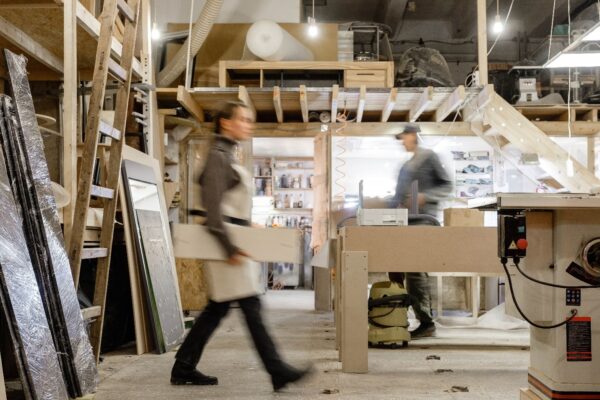Designing a small woodshop requires a thoughtful approach to ensure that the space is both functional and comfortable. Limited square footage often poses unique challenges, but with strategic planning, even a compact area can become an efficient hub for woodworking projects. Effective design goes beyond simply arranging tools and workbenches; it considers the workflow, accessibility, and safety of the space. David Ohnstad highlights how clever organization and innovative solutions can transform small spaces into productive workshops.
A well-designed woodshop should cater to the specific needs of the woodworker while minimizing unnecessary movement and clutter. This involves carefully selecting and arranging tools, optimizing storage, and creating a logical flow between workstations. Every element, from lighting to ventilation, plays a role in ensuring that the shop remains a place of creativity and precision.
Assessing Your Space and Needs
Before diving into the design process, it’s essential to evaluate the available space and understand your specific requirements. Measure the dimensions of the room and consider any structural features that might impact the layout, such as windows, doors, or support beams. Identifying these constraints early on will help guide your decisions when selecting equipment and arranging the shop.
Your woodworking goals and the types of projects you undertake will also influence the design. For instance, if your focus is on small, intricate pieces, you may prioritize a detailed workbench and storage for hand tools. Conversely, if larger furniture pieces are your specialty, you’ll need to accommodate bigger equipment like a table saw or planer. Flexibility is key in a small woodshop, so think about how you can adapt the space to suit evolving needs.
Tool Placement and Workflow Optimization
In a small woodshop, the placement of tools and workstations is critical to maintaining an efficient workflow. Ideally, the layout should minimize the need to move back and forth unnecessarily, creating a logical progression from one task to the next. Consider grouping related tools together; for example, position the jointer, planer, and table saw in proximity to streamline the milling process.
Think about the “work triangle” concept often used in kitchen design, where the sink, stove, and refrigerator are arranged in a triangular pattern for efficiency. This principle can be adapted to woodworking by placing the primary tools you use frequently within easy reach of each other. By reducing the distance between workstations, you can save time and energy while working on projects.
Storage Solutions for Small Spaces
One of the biggest challenges in a small woodshop is finding adequate storage for tools, materials, and supplies. Maximizing vertical space is a great way to address this issue. Installing pegboards on walls allows you to keep frequently used tools within arm’s reach while freeing up valuable counter space. Shelving units and cabinets can be mounted higher up to store less commonly used items.
Mobile storage solutions, such as rolling carts or tool cabinets, can also be highly effective in a small woodshop. These units can be moved out of the way when not in use, freeing up floor space for larger projects. Customizing storage to fit specific tools or materials ensures that everything has a designated place, reducing clutter and making it easier to find what you need.
Creating a Multi-Functional Workbench
In a small woodshop, the workbench often serves as the centerpiece of the space. Designing a multi-functional workbench can greatly enhance your efficiency by combining various tasks into one central location. Incorporate features such as built-in storage drawers, clamps, and tool racks to maximize functionality without taking up additional space.
A foldable or collapsible workbench is another excellent option for small spaces. These designs can be stowed away when not in use, leaving room for other activities. Additionally, consider a height-adjustable workbench to accommodate different types of projects and improve ergonomics.
Lighting and Ventilation Considerations
Proper lighting and ventilation are crucial elements of any woodshop, particularly in a small space where conditions can quickly become uncomfortable. Natural light is ideal for woodworking, so position your workbench and key workstations near windows whenever possible. Supplement with overhead lighting and task lights to ensure that all areas of the shop are well-lit, reducing eye strain and enhancing precision.
Ventilation is equally important for maintaining air quality and ensuring safety. Sawdust and fumes from finishes can quickly accumulate in a confined space, posing health risks. Installing a dust collection system, along with an exhaust fan or air purifier, helps to mitigate these hazards and keeps the shop environment clean.
Adapting to Changing Needs
As your woodworking skills and projects evolve, your small woodshop should be able to adapt to meet new demands. Designing the space with flexibility in mind ensures that you can make adjustments as needed without significant disruptions. Modular storage units, mobile workstations, and versatile tools are all elements that contribute to a dynamic and adaptable workspace.
Regularly reassessing your setup can help identify areas for improvement. For example, if you find yourself frequently rearranging tools or struggling with limited workspace, it may be time to reconfigure the layout. Incremental changes, such as adding new storage solutions or upgrading equipment, can have a significant impact on the overall functionality of the shop.
Embracing the Challenges of a Small Space
Designing a small woodshop requires creativity, resourcefulness, and a willingness to think outside the box. While space constraints may seem limiting at first, they can also inspire innovative solutions that make the most of every square inch. By focusing on organization, workflow, and adaptability, you can create a workshop that is not only efficient but also enjoyable to work in.
A thoughtfully designed small woodshop proves that size is no barrier to craftsmanship. With careful planning and attention to detail, even the most modest spaces can be transformed into productive hubs where creativity thrives.
